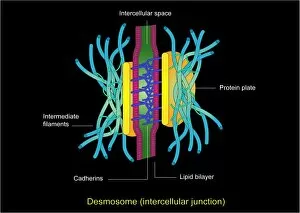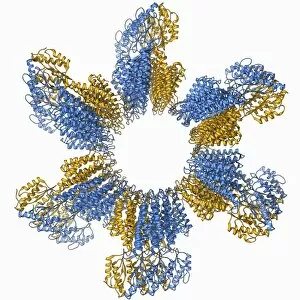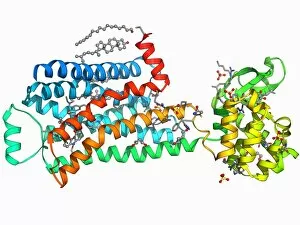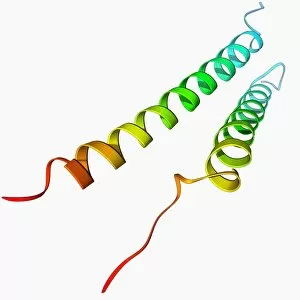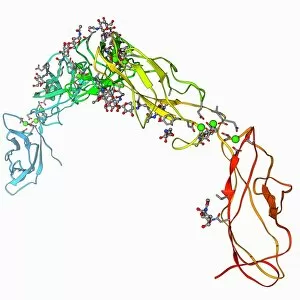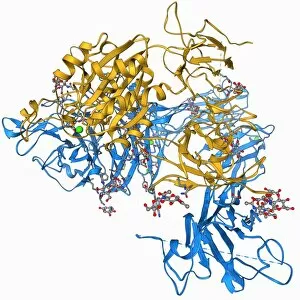Transmembrane Protein Collection
"Exploring the Intricacies of Transmembrane Proteins: Unlocking Cellular Communication" Transmembrane proteins play a vital role in cellular communication and transport
All Professionally Made to Order for Quick Shipping
"Exploring the Intricacies of Transmembrane Proteins: Unlocking Cellular Communication" Transmembrane proteins play a vital role in cellular communication and transport, acting as gatekeepers within the cell membrane. One such protein is the Zinc transporter Yiip molecule (F006 / 9691), responsible for regulating zinc levels inside cells. Another essential the Sodium-potassium ion pump protein (F006 / 9656), which maintains proper ion balance across cell membranes. The Beta-2 adrenergic receptor molecule (F006 / 9643) and its variant (F006 / 9640) are key players in signal transduction, mediating responses to adrenaline and other neurotransmitters. Meanwhile, Integrin transmembrane domain (F006 / 9614) enables cells to adhere to their surroundings, facilitating tissue formation and wound healing. Growth factor receptor molecule (F006 / 9613) and Insulin receptor molecule (F006 / 9581) are crucial for cellular growth regulation and glucose metabolism respectively. Cytochrome c oxidase and antibody complex (F006/9474), Lactose transporter protein molecule (F006/9466), Beta secretase enzyme molecular model (F006/9467), Photosynthetic reaction centre (F006/9462), and Cytochrome c oxidase molecule (F06/9447) also exemplify diverse functions of transmembrane proteins. These remarkable molecules traverse the lipid bilayer, bridging extracellular signals with intracellular processes. Studying their structure-function relationships provides insights into disease mechanisms while offering potential targets for therapeutic interventions. As we delve deeper into understanding these intricate transmembrane proteins, we unravel nature's ingenious design that allows life-sustaining processes to occur seamlessly within our cells' boundaries.

